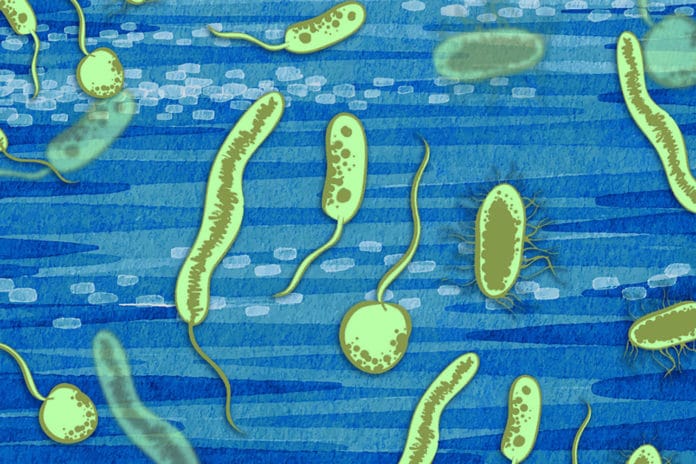Around 2.3 billion years ago, the Great Oxygenation Event or GOE introduced free oxygen into our atmosphere. However, what caused the event remains one of the great mysteries of science.
MIT scientists have proposed a new hypothesis- suggesting that interactions between certain marine microbes and minerals in ocean sediments caused the accumulation of oxygen in the atmosphere. These interactions helped prevent oxygen consumption, triggering a self-amplifying process where more and more oxygen was made available to accumulate in the atmosphere.
Scientists formulated their hypotheses using mathematical and evolutionary analyses. It shows that microbes- existed before the GOE-evolved the ability to interact with sediment in the way that scientists proposed.
The atmosphere of the early Earth lacked oxygen. This changed after the Great oxidation event.
Gregory Fournier, associate professor of geobiology in EAPS, said, “If you look at Earth’s history, it appears there were two jumps, where you went from a steady state of low oxygen to a steady state of much higher oxygen, once in the Paleoproterozoic, once in the Neoproterozoic. These jumps couldn’t have been because of a gradual increase in excess oxygen. There had to have been some feedback loop that caused this step-change in stability.”
Scientists wondered whether this feedback loop could have come from the process in the ocean?
Scientists explained, “Microbes in the ocean use oxygen to break down organic matter. This process involves the consumption of organic carbon through oxidation, accompanied by the consumption of oxygen. This made us ponder whether there has been some process by which the presence of oxygen stimulated its further accumulation?”
To find the answer, scientists created a mathematical model. Their model predicted: If microbes possessed the ability only partially to oxidize organic matter, the partially-oxidized matter, or “POOM,” would effectively become “sticky” and chemically bind to minerals in sediment in a way that would protect the material from further oxidation. The oxygen that would otherwise have been consumed to degrade the material fully would instead be free to build up in the atmosphere.
According to scientists, this process must be triggered as a feedback loop, accumulating oxygen in the atmosphere, causing high-oxygen equilibrium.
Fourier says, “That led us to ask, is there a microbial metabolism out there that produced POOM?”
To find out, scientists poked around the scientific literature and identified a group of microbes that partially oxidizes organic matter in the deep ocean. They found some microbes that belong to the bacterial group SAR202. Their partial oxidation is carried out through an enzyme, Baeyer-Villiger monooxygenase, or BVMO.
Through phylogenetic analysis, the team determined how far back the microbe, and the gene for the enzyme, could be traced. They found that these bacterias have ancestors dating back before the GOE. Also, the gene for the enzyme could be traced across various microbial species as far back as pre-GOE times.
Scientists also found that the GOE significantly increases the gene’s diversification or the number of species acquired.
Lead author Haitao Shang, a former MIT graduate student, said, “We found some temporal correlations between the diversification of POOM-producing genes and the oxygen levels in the atmosphere. That supports our overall theory.”
Scientists are planning to conduct more research on this to confirm this hypothesis.
Journal Reference:
- Shang, H., Rothman, D.H. & Fournier, G.P. Oxidative metabolisms catalyzed Earth’s oxygenation. Nat Commun 13, 1328 (2022). DOI: 10.1038/s41467-022-28996-0
